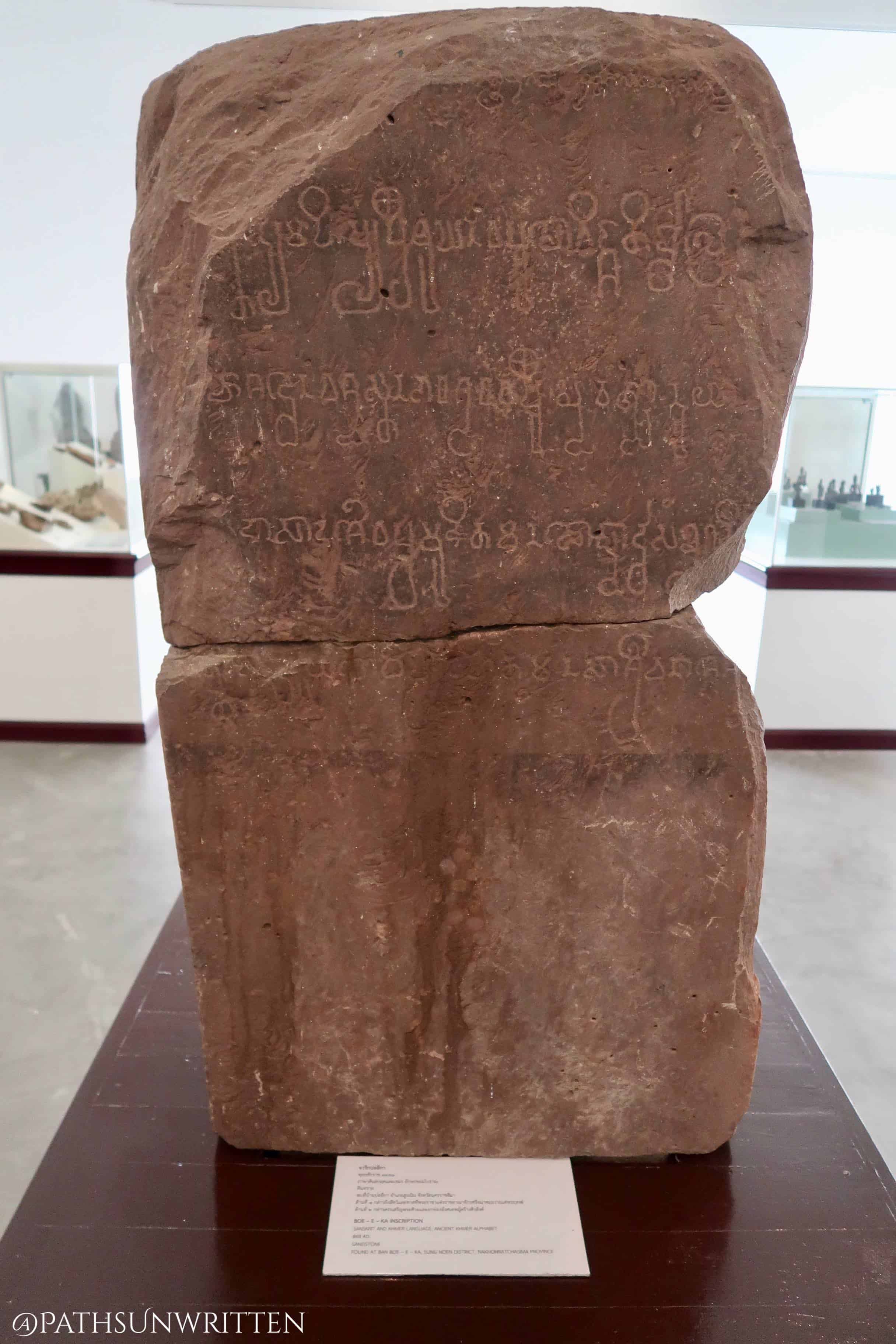The Bo Ika Inscription found in the ruins of Muang Sema tells the tale of Sri Canasa, a lost kingdom that once existed outside of the Angkorian realm.

Name: Bo Ika Inscription
Culture: Khmer Empire
Age: 868 CE
Origin: Muang Sema, Nakhon Ratchasima, Thailand
Location: Phimai Museum, Nakhon Ratchasima, Thailand
What it is: Sandstone tablet inscribed with Khmer and Sanskrit languages describing a kingdom outside of the Angkorian territory called Sri Canasa
Contents
The Story of the Bo Ika Inscription
The Bo Ika Inscription (also spelled Bor E-Ka Inscription) is a sandstone tablet inscribed with the Khmer and Sanskrit languages and written in the Khmer writing system. The tablet was discovered at Monument No. 1 in the ruins of the walled city of Muang Sema, located in Nakhon Ratchasima Province.


Muang Sema (not the original name) was an ancient city located in the cultural crossroads of the Korat Plateau. This location has been the historic meeting point and important border outpost for three distinct cultures throughout Thailand’s history. Each built their own walled city in the area: Muang Sema of the Dvaravati, Phimai of the Angkor Empire, and Nakhon Ratchasima of the Thais in the more recent centuries.
Monument No. 1, also referred to as Bo Ika temple in some documentation, was a later Khmer monument built at the center of the already centuries-old city of Muang Sema. Despite the older monuments belonging to Dvaravati Buddhist design, the Khmer Monument No. 1 (Bo Ika Temple) was a clearly Hindu shrine dedicated to Shiva.

The Bo Ika Inscription is important due to its mention of an as-yet-undiscovered kingdom laying outside of the Angkorian realm known as Sri Canasa (also Sri Janasa or Canasapura). The same tablet has mentions of Hindu deities, despite the Dvaravati realm being the mechanism by which Buddhism (Theravada sect) originally entered the area that is now Thailand. Another later tablet found in the Thai capital of Ayutthaya also references the polity of Sri Canasa, though also doesn’t give enough details to narrow down its exact nature or location.


Several locations have been proposed as Sri Canasa, most commonly (and perhaps logically) Muang Sema. However, there are several walled and moated settlements found throughout Isaan and the Korat Plateau, a region which fell at the far-flung frontiers of the Khmers, Dvaravati, and Thais. Several semi-independent states are known to have flourished in this region, which may or may not have fallen under the mandalas of the larger empires named before. While Muang Sema is perhaps the most likely candidate to be the Kingdom of Sri Canasa, it could realistically be any of these cities.
Fast Facts

Glossary
Angkor
Capital of the Khmer Empire, located near modern day Siem Reap, Cambodia.
Ayutthaya
City in central Thailand and historic capital of the Ayutthaya Kingdom, which was succeeded by the Thonburi Kingdom in 1767.
Bo Ika Inscription
Sandstone tablet inscribed with Khmer and Sanskrit languages describing a kingdom outside of the Angkorian territory called Sri Canasa.
Dvaravati
Mon-Burmese ethnic group based in modern Nakhon Pathom, Thailand. Responsible for the introduction of Buddhism (Theravada sect) to Thailand.
Khmer Empire
Hindu-Buddhist kingdom which ruled much of Southeast Asia from their capital at Angkor.
Muang Sema
Abandoned Dvaravati city in modern Nakhon Ratchasima Province. The Muang Sema ruins contain both Dvaravati Buddhist and Khmer Hindu temples.
Nakhon Ratchasima
City established in 1656 by the Ayutthaya Empire as a frontier outpost to fortify their control in the area.
Phimai
Walled city of the Khmer Empire dating back to at least the 600s CE. The city stood at the end of the important Angkorian Dhammasala Route.
Sri Canasa
A polity referred to in the Bo Ika Inscription discovered at Muang Sema
Sources
- “Boe – E – Ka Inscription” museum display. Phimai National Museum, Nakhon Ratchasima, Thailand.
- “Muang Sema” sign. Muang Sema Historical Park, Nakhon Ratchasima, Thailand.
- “Prasat Muang Sema” museum display. Phanom Rung Museum, Buriram, Thailand.
- “Sri Janasa” museum display. Korat Museum, Nakhon Ratchasima, Thailand.
- “The Elusive Kingdom of Sri Canasa”. Southeast Asian Kingdoms, https://southeastasiankingdoms.wordpress.com/2016/07/08/the-elusive-kingdom-of-sri-canasa/.














Like!